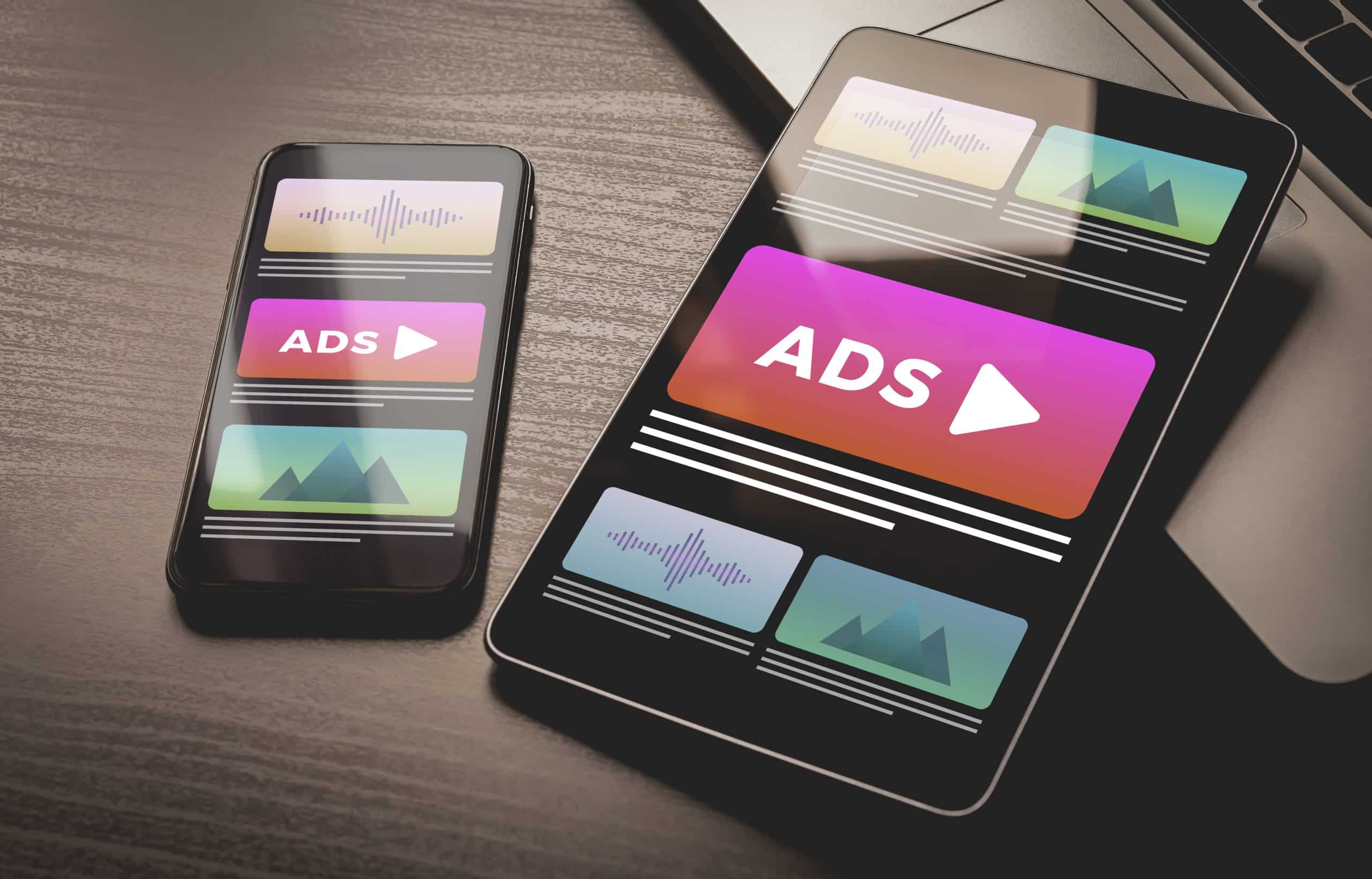- What Is Native Video Advertising?
- Why Use Native Video Ads?
- How Do Native Ads Work?
- Types of Native Ads As Video
- Examples of Native Video Ads
- How to Create Great Native Video Ads
- Pros and Cons of Native Video Ads
- Common Mistakes With Native Video Ads
- Native Video Ads vs. Pre-roll Ads
- Key Takeaways
- Frequently Asked Questions (FAQs)
What Is Native Video Advertising?
Native video advertising is a form of paid media where video ads integrate branded messages seamlessly into existing content. It usually consists of in-feed video ads uploaded directly to different platforms that are finely targeted to your desired audience. This way, these video ads feel less intrusive and more engaging, and enhance user experience while subtly promoting your brand.
Native ads are big business. The market had a value of $4.1 billion in 2023 and could exceed $30 billion by 2032, as per Business Research Insights. One of the draws of using native video in advertising is their effectiveness. Native ads are more engaging than display ads, which leads to higher click-through rates (CTRs). According to a Sharethrough/IPG Media study, “consumers looked at native ads 53% more frequently than display ads.” Additionally, 32% of respondents said they would share a native ad with a friend or family member, compared to only 19% for display ads.
Why Use Native Video Ads?
Unlike display ads, native video ads are optimized for mobile, making it easier for users to engage with the content on a broader range of devices. The higher CTRs, particularly on mobile, lead to increased engagement. Advertisers also see improved return on investment (ROI) with other key metrics, including longer view times, higher number of shares, and increased conversions.
Native video ads also increase brand awareness by delivering relevant content to users with little disruption. This helps to build trust more quickly.
How Do Native Ads Work?
The key to effective native video ads is matching the platform on which they appear. For example, a native ad embedded into Instagram may look and feel like any other Instagram reel or story in your feed. You may not even realize that you’re viewing an advertisement, though there should always be an indicator that you are. For instance, you might see the word “Sponsored” in the corner of the video.
Types of Native Ads As Video
Here are five types of native video ads. Chances are, you’ve encountered all of them at one time or another:
In-Feed Video Ads
An in-feed video ad is often used on social media platforms such as Instagram, Facebook, and LinkedIn. These ads closely resemble regular user-generated content but will include a “sponsored” label in one corner. You will encounter these ads as you scroll through your regular feed.
In-Article Video Ads
In-article video ads are designed to integrate with text-based content, such as articles or blog posts. If used effectively, they will be very relevant to the content you are consuming and will play without you having to stop reading the article.
Search Video Ads
Search video ads appear in search results on Google, Bing, YouTube, etc. They will be very relevant to the keyword that you typed into the search field and will look much like the user-generated videos that appear. For example, let’s say you perform a YouTube search for “Hyatt hotels in San Diego.” Along with the various Hyatt Hotel reviews that are bound to appear, there will be one or more sponsored videos from the hotel chain or Hyatt’s loyalty rewards program.
Interactive Video Ads
Interactive video ads work well on platforms like TikTok. The experiences they provide may include quizzes, polls, or other clickable options.
Recommended-Content Video Ads
Have you ever seen a “Suggested” or “Recommended” video at the end of an article on a website? The video aligns closely with the content you just consumed and is designed for you to explore further. These videos will also match the editorial style of the website you are on.
How to Start a Discovery Campaign From Scratch
Examples of Native Video Ads
1. Facebook Native Video Example
Here’s a Facebook native video from Microsoft. The promo shows people of different ages and capabilities using a new game controller. This video succeeds in engaging its audience because it appears to feature real people in real situations.
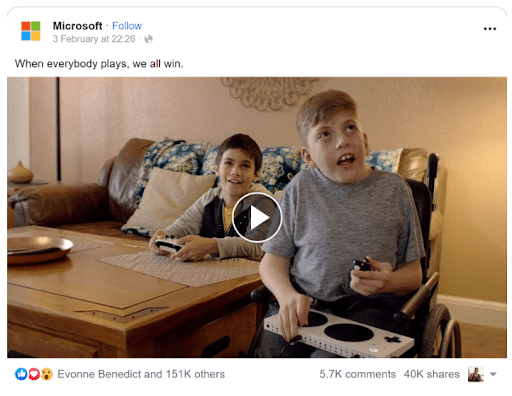
As you can see from the image, in addition to more than 150,000 reactions, it generated over 5,700 comments. People also shared the video more than 40,000 times, expanding its reach beyond Microsoft’s fans.
2. Twitter Native Video Content
Trebor used native videos on Twitter to engage its followers and build brand awareness. In this example, the company highlighted everyday annoyances with short videos using the #GiveMeStrength hashtag (a British expression used in annoying situations).
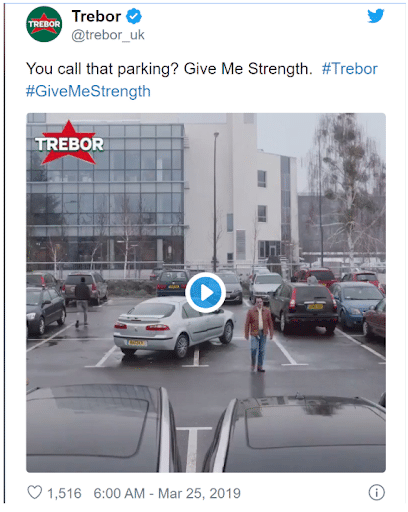
This native video campaign worked because it targeted its British audience with the hashtag and a humorous approach to life’s little challenges. Note: Short videos work well for users on mobile devices. The initial campaign got 16 million views and resulted in an 8% increase in brand awareness.
3. Instagram Native Video Ads
Instagram offers multiple options for using native video. Here’s a closer look at how a leading footwear retailer from the U.K. leveraged native video to boost online and in-store sales during the back-to-school season.
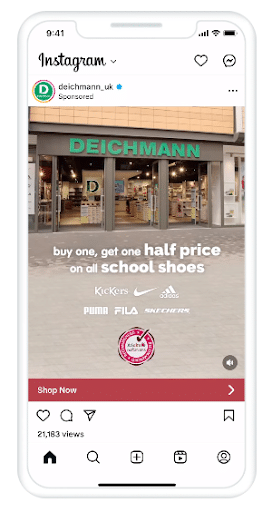
Deichmann UK runs an annual back-to-school ad campaign. Recently, it hired an ad agency, TRGT, to run a digital ad campaign on Instagram and other Meta apps. The campaign objective was to increase awareness, engagement, and sales. It ran from July 24 to September 10, 2023, with the following results:
- A 2.9-point boost in purchase intent
- A 1-point boost in top-of-mind awareness
- An 8-point lift in standard ad recall
4. Pinterest Native Video Advertising
MasakTV used Pinterest video pins to reach 18 to 24-year-olds in Indonesia. The digital video company makes cooking tutorial videos and wanted to highlight easy Indonesian recipes to make during Ramadan.
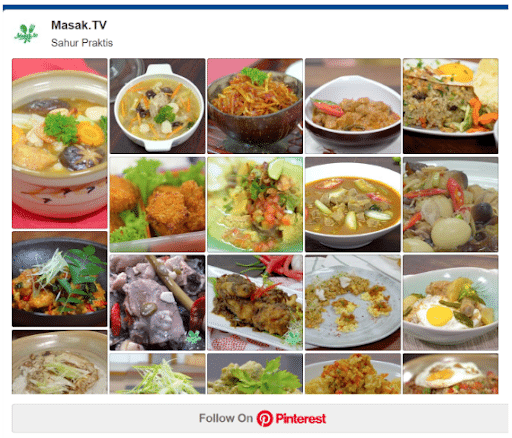
It published these via a special Pinterest board and successfully connected with its target audience. The campaign tripled video views and quadrupled impressions. And 39% of its traffic came from its core 18 to 24-year-old audience.
5. YouTube Native Video Ads
Sony Pictures Entertainment (SPE) in Thailand used mobile native video advertising on YouTube and other popular social media sites to increase awareness of its upcoming Spiderman, Goosebumps, and Venom movies. It produced trailers, such as the YouTube native video example below:
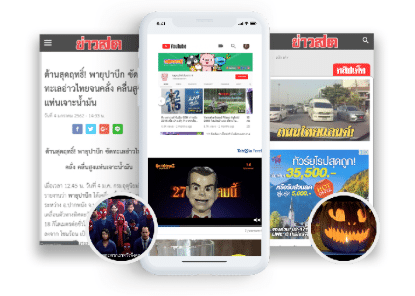
The campaign targeted mobile and tablet users in Bangkok. It was successful, resulting in 194,000 completed video views and 411,000 impressions.
6. Taboola Video Ads
Of course, you don’t have to choose a single platform. Some Taboola customers have successfully run native video advertising on multiple social media sites and via the Taboola feed.
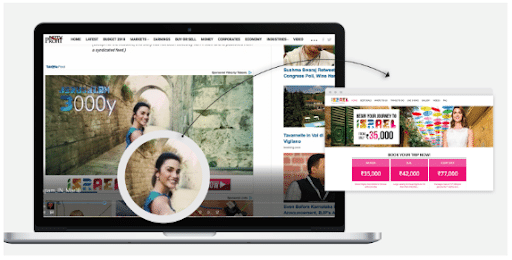
For example, the Israeli Ministry of Tourism ran native video ads on YouTube, Facebook, and Taboola publisher sites to increase brand awareness. The campaign converted 40% better on Taboola than on other platforms and achieved 30 million video impressions.
How to Create Great Native Video Ads
Here are five tips for creating effective native video ads:
1. Blend With Your Chosen Platform
Your video’s style and tone need to match the platform you are advertising on. This includes your formatting, visuals, and messaging. Also, your video should match the length of typical content found on the platform. Don’t go for long-form content on a platform that favors short videos.
2. Capture Attention
You must grab the user’s attention almost immediately. Remember, people are used to scrolling past ads as quickly as possible. Incorporate eye-catching visuals, bold text overlays, and an intriguing hook for maximum effect.
3. Focus on Storytelling
Too many advertisers put selling ahead of storytelling. But stories are what add value and evoke the audience’s emotion. Start with a story that aims to educate, entertain, or inspire.
4. Make It Relevant to Your Target Audience
Always align your video’s message to your audience’s preferences. If it’s irrelevant or doesn’t resonate, you’ll struggle to get any type of engagement, let alone conversions.
5. Optimize for Mobile
Social media platforms like TikTok and Instagram are designed for mobile devices. As such, your video ads need to be optimized for mobile. This includes using the proper format (vertical or square) and including captions to communicate your message without sound. Also, your audience’s attention span is short — keep it concise.
Pros and Cons of Native Video Ads
| Pros | Cons |
| Seamless integration | Creative limitations when aligning to a specific platform |
| Higher engagement rates than other ad formats | Might be overlooked (don’t blend in too well) |
| Allows for better targeting | Creating videos can be time-consuming |
| Authenticity builds brand trust | Potential risks if audience feels misled or deceived |
| Can be adapted to multiple platforms |
Common Mistakes With Native Video Ads
Common mistakes can lead to reduced engagement and ineffective native-video ad campaigns. Here are some errors to avoid:
Not Blending With the Platform
Video ads are highly effective when they match the style and tone of the platform, whether it’s YouTube, Instagram, or Facebook. If you don’t make an effort to blend your videos with user-generated content, you’ll struggle to generate high click-through and conversion rates.
Too Focused on the Sale
Native video ads that don’t include a story can come across as a sales pitch. Sales-based ads are much less likely to resonate with their audience and could be considered pushy or annoying.
Not Optimized for Mobile
Imagine viewing a horizontal video on an Instagram reel or a vertical video on YouTube — most would skip right past it. Approximately two billion people use their mobile devices to access Instagram. If your videos are not optimized for mobile, there’s a good chance they won’t reach their intended audience.
No Clear Call to Action (CTA)
Many ineffective video ads lack a call to action (CTA). But your audience needs to know what the next steps are after they’ve finished watching. Your CTA doesn’t have to be overt. There are many subtle ways to nudge your audience toward your goal.
One example would be to include a visual cue, such as a shot of a person taking the action you want your audience to follow. Or, rather than asking your audience to commit, you could encourage their curiosity by asking them a question that causes them to reflect on their own challenges. For example, a video ad for Zapier, a workflow automation platform, could ask the viewer, “What would you do with more time and less stress?”
Native Video Ads vs. Pre-roll Ads
A pre-roll ad is a video advertisement that plays before the regular content on platforms such as YouTube, Netflix, or Amazon Prime Video. To the untrained eye, it may be challenging to discern between native video and pre-roll video ads. However, there are a few key differences.
The biggest difference is the ability for people to choose, or not have a choice in, consuming them. Pre-roll video ads act as a barrier to the content the person is trying to consume, as they are forced to watch at least part of the video before they can proceed.
Native videos, on the other hand, present the option to simply keep scrolling without any disruption or barrier to the desired user experience. Native video ads are more effective than pre-roll because they are less interruptive, are more targeted in their placement, and integrate more seamlessly within the content. While more recent reporting would be welcome, a 2013 Nielsen case study confirmed as much in an 82% brand lift among users exposed to native video vs. pre-roll ads.
Key Takeaways
When done correctly, native video ads can be very effective, leading to higher click-through rates, longer viewing times, and increased conversions. Seamless integration of your videos and impactful storytelling can also help you build trust with your audience and boost brand awareness.
Remember to avoid common mistakes, such as not blending with the style and tone of the platform on which you are running your ads, not optimizing your ads for mobile, or failing to include a clear call to action.
Frequently Asked Questions (FAQs)
How does native advertising apply to social media?
Sponsored videos, story ads, interactive video ads, and influencer partnerships can be highly effective on various social media platforms if the ads match the look and feel of the platform’s regular content.
What is the difference between native video and regular video ads?
Native ads are platform-specific (e.g., Instagram, Facebook) and are designed to blend seamlessly into the regular content feed. Regular video ads are not integrated with the content and often interrupt the audience’s viewing experience. An example would be an ad you are forced to watch before a YouTube video or on a streaming channel such as Netflix.
What is the difference between native ads and display ads?
Display ads are usually static images displayed as banners on a website. They may be placed in various locations on the webpage, including in the header or footer sections, sidebar, or in the middle of the content. Native ads, on the other hand, blend in with the content and are less disruptive.
